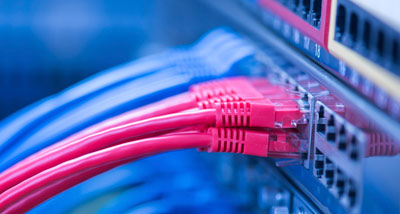2. Hub
A hub is a hardware device that connects multiple computers together in a network and allows them to share data packets.

Each computer will be connected to a single 'port' on the hub. So if you purchase an '8 port hub', you will be able to connect up to eight computers together.
When a data packet arrives at a hub port, it transmits it to every other port. Unlike a switch it does not examine data packets. Re-transmitting every packet to every port means that data collisions are more frequent than a switch. Network protocol can deal with collisions but it does have the effect of slowing down throughput when too many occur. Data security may also be an issue because every computer encounters every data packet, even if they were not the intended recipient.
With these issues in mind, a hub is a good cheap solution for a simple, low-medium bandwidth network. But if more sophisticated handling of data packets is needed and better performance is sought then the more expensive switch device should be used.
You can also 'daisy chain' hubs to allow even more computers to join the network. However there is a problem with doing this - see 'Switches' for more details.
Not all network topologies use a hub:
Star Topology |
|
Bus Topology |
No hub |
Ring Topology |
No hub |
challenge see if you can find out one extra fact on this topic that we haven't already told you
Click on this link: Network Hub
